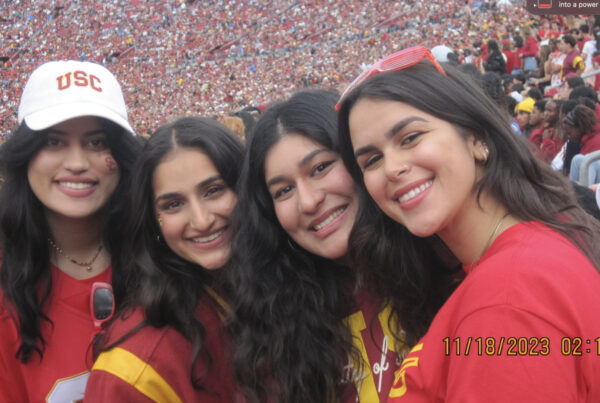This class is offered through the Thematic Option program and meets once a week for three hours. While I had originally thought I would be utterly unable to function coherently in a 3-hour class, much of the class is devoted to the study of rare materials—replicas (oftentimes containing original photos) of the few surviving books and codices that discuss Mexica (Aztec) history. Engaging with these materials firsthand—looking at imagery and translation and learning how to “read” indigenous Mesoamerican pictographs—has been such an amazing experience.

An image of the Codex Mendoza taken in class

Cari and my case, titled Gods to God: Analyzing Mexica Religion Through Colonial Codices
The grand opening of our exhibit in Doheny Memorial Library

A snapshot of the online exhibit, showing a digital image of the Codex Magliabechiano





